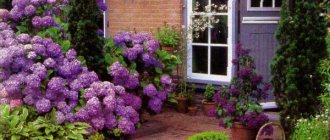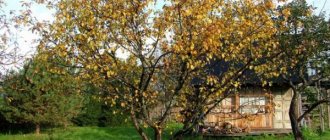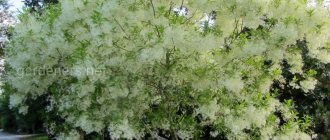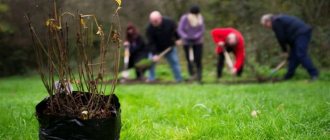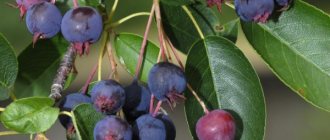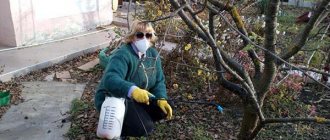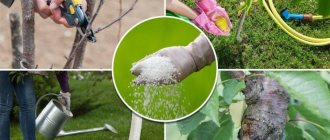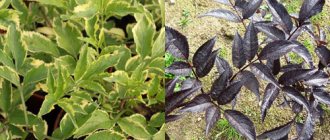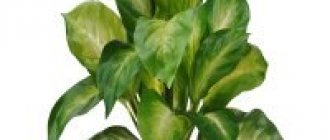Fruit bushes in the garden will bring many benefits to its owners. Firstly, they will give you a lot of different tasty and healthy berries. Secondly, they will perfectly decorate your garden plot. Also, fruit bushes are unpretentious in care; growing them does not entail a lot of problems.
These fruiting bushes or trees are best planted in the garden in the fall, about a month after the leaves have fallen. Before doing this, you need to make drainage in the hole. If the shrub is heat-loving, then a hole for it is prepared in the fall, and seedlings are planted in the spring.
All fruit bushes need to be pruned:
- black currants - in July;
- gooseberries - in July and October, when the leaves fall;
- blackberries and raspberries - in October, when the last berries are collected;
- honeysuckle - in November and mid-March.
Let's look at some types of fruit bushes (some of them are also presented in the form of a tree), in particular, their names, in a little more detail
Currant
Currant bushes may have:
- black;
- red;
- white berries.
All of them are frost-resistant and tolerate heat and drought well. Life expectancy is up to 15 years.
Black currants are characterized by black flower buds that form on annual shoots and grow into ringlets after harvest. Every 5 years it is recommended to prune old branches. It is best to plant the bush in a well-protected, draft-free, sunny area. The lifespan and fruitfulness of this bush is about 10 years .
White and red currants are more resistant to frost and drought. These shrubs live and bear fruit for up to 18 years. They take root well in open, elevated areas without drafts.
Fruit trees for a small garden
Not every gardener has the opportunity to grow plants over a large area. By choosing the right type and growth form of fruit trees and shrubs, you can grow a variety of fruits in a small garden. Small fruit trees and bushes of berry plants are suitable for such a garden. Even the smallest garden can grow delicious fruits. A few pieces are enough to enjoy your own harvest.
Features of fruit trees for a small garden. How and what to plant in a small area?
Due to limited space, planting small fruit trees is ideal.
They grow more slowly than their larger relatives, have low stems and a small or narrow crown. The first fruits can often be harvested in the second year. Fruit trees and shrubs, in addition to tasty fruits, can create various compositions, decorating the garden landscape. They can be planted in a separate part of the plot or placed throughout the garden next to ornamental plants.
Additional Information! Having a small garden, you don’t have to give up fruits and berries. Modern varieties have larger fruits, produce high yields, are better stored and have a more attractive appearance. In order to admire beautiful roses at home without diseases and pests, you need to pay attention to the correct care conditions. The result of careful rose care is that the foliage looks healthy and the plants are decorated with lush flowers.
When choosing fruit trees and shrubs for a small garden, it is necessary to take into account the requirements for the types of fruits and their growing conditions. The number of trees planted depends on the size of the plot and the growth habit of the plants.
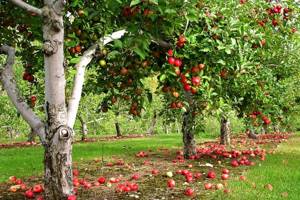
When cultivating fruit trees, be it trees or shrubs, you need to know that this is not a matter of just one season. Almost all plants, except for some varieties of strawberries, will grow on the site for several years until they produce their first harvest. You need to wait several years (3-5).
In order to constantly have fresh and tasty fruits during the season, a combination of species and varieties with gradual ripening is selected.
The most suitable are apples and pears, which are easy to shape. Since these trees will be the tallest in the garden, place them on the north side of the garden so that they shade the lower species as little as possible.
Fruits on the “pillar”
A separate group consists of columnar varieties. They have a clear trunk and very short side shoots. Short internodes give a slight increase in height. The crowns do not exceed 60-80 cm in diameter. They can be grown not only in the garden, but also in pots on the terrace and balcony.
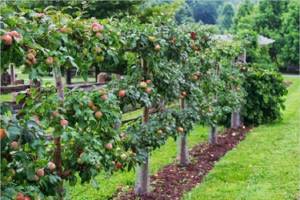
Trellis fruit trees
Columnar varieties are somewhat more sensitive to frost than “ordinary” ones, so young fruit trees should be protected with mulch before winter.
Additional Information! Shaping fruit trees is a good way to reduce their size. They can create an original hedge.
Columnar varieties have the same requirements as classic apple trees.
- Plant them in rows, at a distance of about 50 cm.
- They begin to bear fruit very early, from one to two years after planting (depending on the size of the young tree).
- The height, depending on the base and location, is about 2.5-3 m, which simplifies harvesting and maintenance.
- Low pruning measures (remove longer side shoots that may appear on the trunk in August).
- Very fertile.
- Great decorative value of fruits.
- New generation varieties are becoming increasingly resistant, especially to scab, and in some cases to powdery mildew.
- Light pruning: No pruning is required and the central axis should not be shortened in the first six to eight years!
Gooseberries and chokeberries grafted onto a currant trunk look interesting, resembling miniature trees with a spherical crown.
Note! However, it should be borne in mind that, besides apple trees, other types of fruits do not yet have genetically columnar growth.
Berry bushes for a small garden

Bushes of berry plants take up little space, so they are perfect for a small garden. In turn, currants, raspberries or blackberries planted in rows can replace a traditional hedge.
Due to their exceptionally tasty and healthy fruits, blueberries are also planted. You just need to remember to prepare a place with acidic soil for it.
Yellow and black raspberries are an interesting addition. They bear very tasty fruits, which (in black varieties) contain a lot of anthocyanins (five times more than red raspberries) and have very high antioxidant properties.
The grapevine on the gazebo grows healthy, does not freeze and produces a good harvest. You can use it to make a shelter for the terrace.
Two varieties on one tree
Trees that bear a variety of fruits are especially practical for small gardens, where there is often not enough space for large or multiple trees. Apples, pears or cherries need suitable partner trees nearby for pollination. If one tree contains the desired pollinator variety, this is all the more practical in small gardens. If there is room for only one tree, you can graft two different varieties onto one rootstock. Cherries and cherries grow on a cherry tree at the same time, and red and yellow apples hang on an apple tree. These two varieties pollinate each other, so a high yield is guaranteed.
When choosing plant varieties for the garden, they take into account not only suitability for a given area, but also durability in cultivation. This will save a lot of time on care and treatment. You also need to prepare for regular cutting so that the varieties remain columnar.
Small fruits
Its height makes it ideal for small gardens, but even then you can play with the space. Strawberries are a type of fruit that should not be missed in any garden. To save space, you can grow it with growing apple trees or in boxes hanging on a wall or fence.
Dwarf varieties
In small gardens, low-growing varieties grafted on so-called dwarf rootstocks are better suited. They often do not exceed 2 m in height and begin to bear fruit faster than tall varieties. An interesting group is low-growing varieties of fruit trees. They are characterized by short internodes and slower growth, which leads to the formation of small crowns. These species are intended primarily for ornamental purposes, although they still bear some fruit each year and will bear fruit the second year after planting.
Plants formed in such a way that their crowns are flat (most often apple and pear trees) look very interesting. In a small garden, they can be planted against a wall or arranged in rows. Trees with a flat crown, stretched over a special structure (most often apple and pear varieties) can cover the terrace and separate the entrance area.
The most common fruit species are dwarf varieties of peaches (Bonanza, Honey Gold, Honey Red) and nectarines (Rubis, Balkonella), dwarf plums (Buhler, Robusto), pears (Garden Pearl, Sunrise), apples (Delegrina, Corquella, Garden Gold , Granny Green), apricots (Aprigold), cherries (Garden Bing) and cherries (Piedmont, Carmine Jewel).
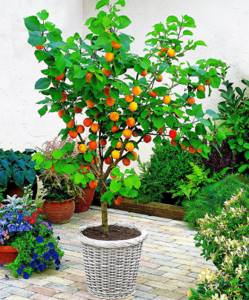
Mini apricot fruit in a pot
Fruit trees on the balcony and terrace
Miniature fruit trees are designed specifically for growing in pots on balconies and terraces. They grow up to 1.5 m in height and form small, beautiful crowns. They are very decorative during flowering and fruiting. Sometimes two varieties differing in fruit color are grafted onto one rootstock.

Fruit trees in pots
At the end of the season they should be protected from frost. Plants in pots can be moved to a cold room, and if they winter outside, wrap the containers and cover the crowns.
Fruit trees and shrubs - how to plant and care
Some fruit trees and shrubs produce better yields when pollinated with pollen from another plant. Therefore, it is worth planting several different varieties or choosing self-pollinating ones.
The place for fruit trees and shrubs should be sunny. The soil is permeable, moist, but not wet, with a high content of humus. It is better not to plant fruit trees and shrubs in a deep place.
It is worth adding compost or manure to the garden soil. In subsequent years, plants should also be supplied with these fertilizers in the spring. Only for fertilizing American blueberries, which grow on acidic soil, is it better to use specialized fertilizers, as they regulate the acidity of the soil.
Young plants need to be watered regularly, older, well-rooted plants - only during prolonged drought (actinidia, blueberries and cranberries love constantly moist soil).
An important procedure is pruning shoots. Remove old, diseased, damaged branches.
Select varieties that are resistant to diseases and pests. It is better not to use chemicals in your own garden. Plants should be constantly checked for signs of disease or pests and, if necessary, infected parts of the plant should be removed. There are also ecological plant protection products on sale, but they are not as effective as synthetic products. They work if used regularly as soon as the first symptoms of infection appear.
Similar articles
Mulberry: tree care, fruit benefits
Boxwood shrub (buxus). Planting and care
How and when to prune apricot trees for a rich harvest
How to water an orchid at home
Gooseberry
This type of shrub is also called “northern grapes”.
It contains a very large amount of microelements and vitamins. Gooseberries do not need special care. There is only one disadvantage of this bush: it is very sensitive to cold and does not tolerate high humidity. As a result, in winter, shrubs in the garden should be sprinkled with snow or wrapped , and in summer they should not be filled with water. The duration of fruitfulness and life is approximately 25 years.
Recent Entries
Chainsaw or electric saw - what to choose for the garden? 4 mistakes when growing tomatoes in pots that almost all housewives make Secrets of growing seedlings from the Japanese, who are very sensitive to the soil
